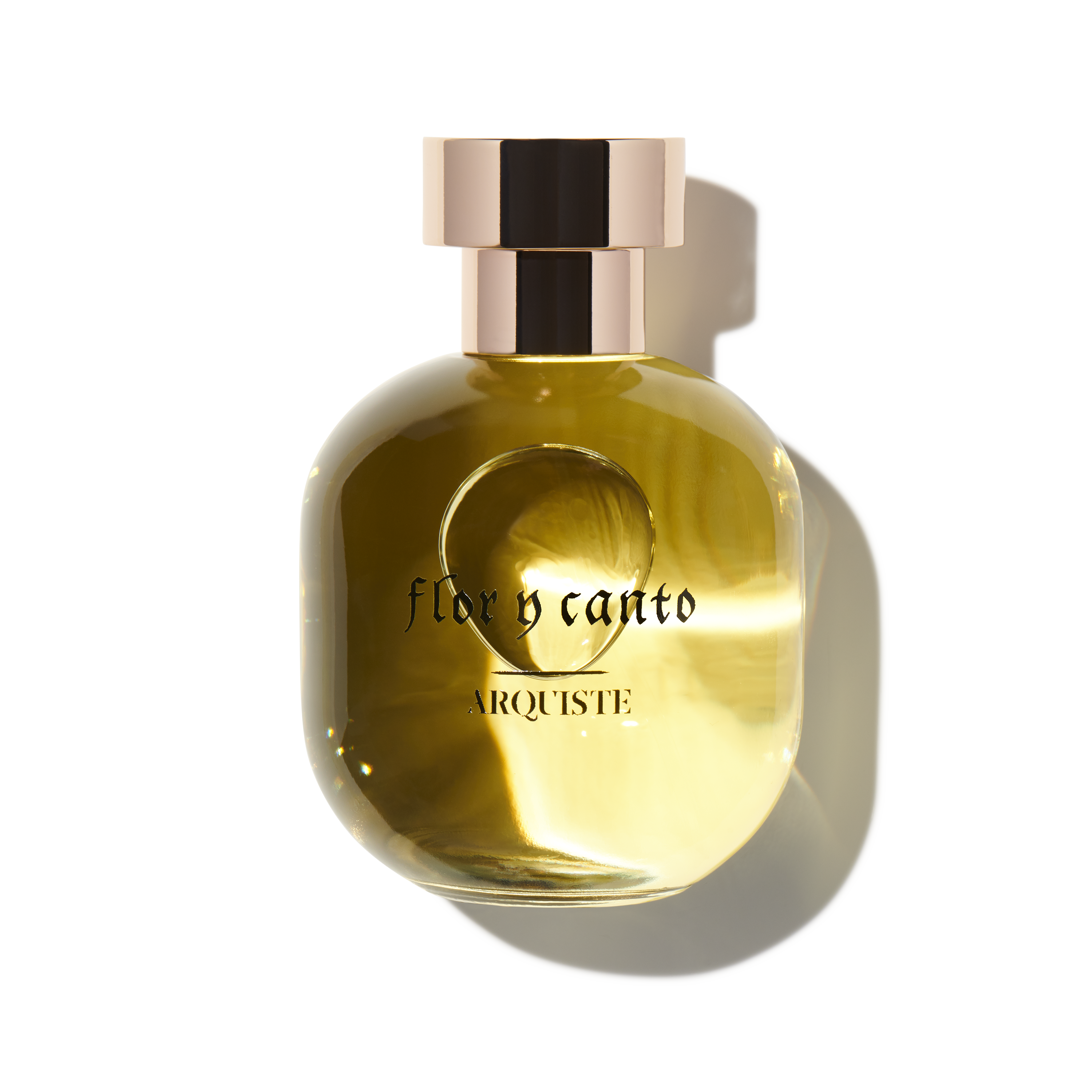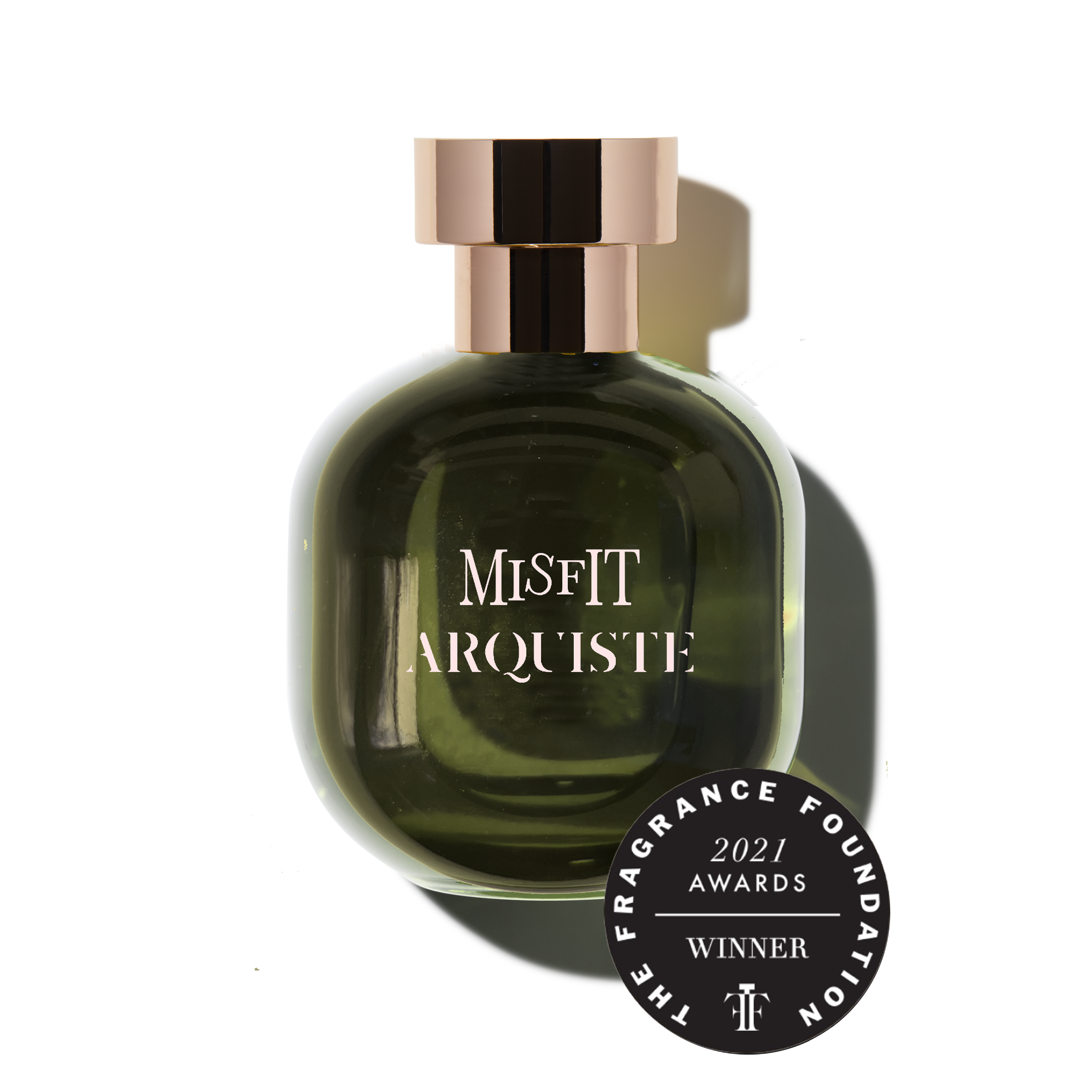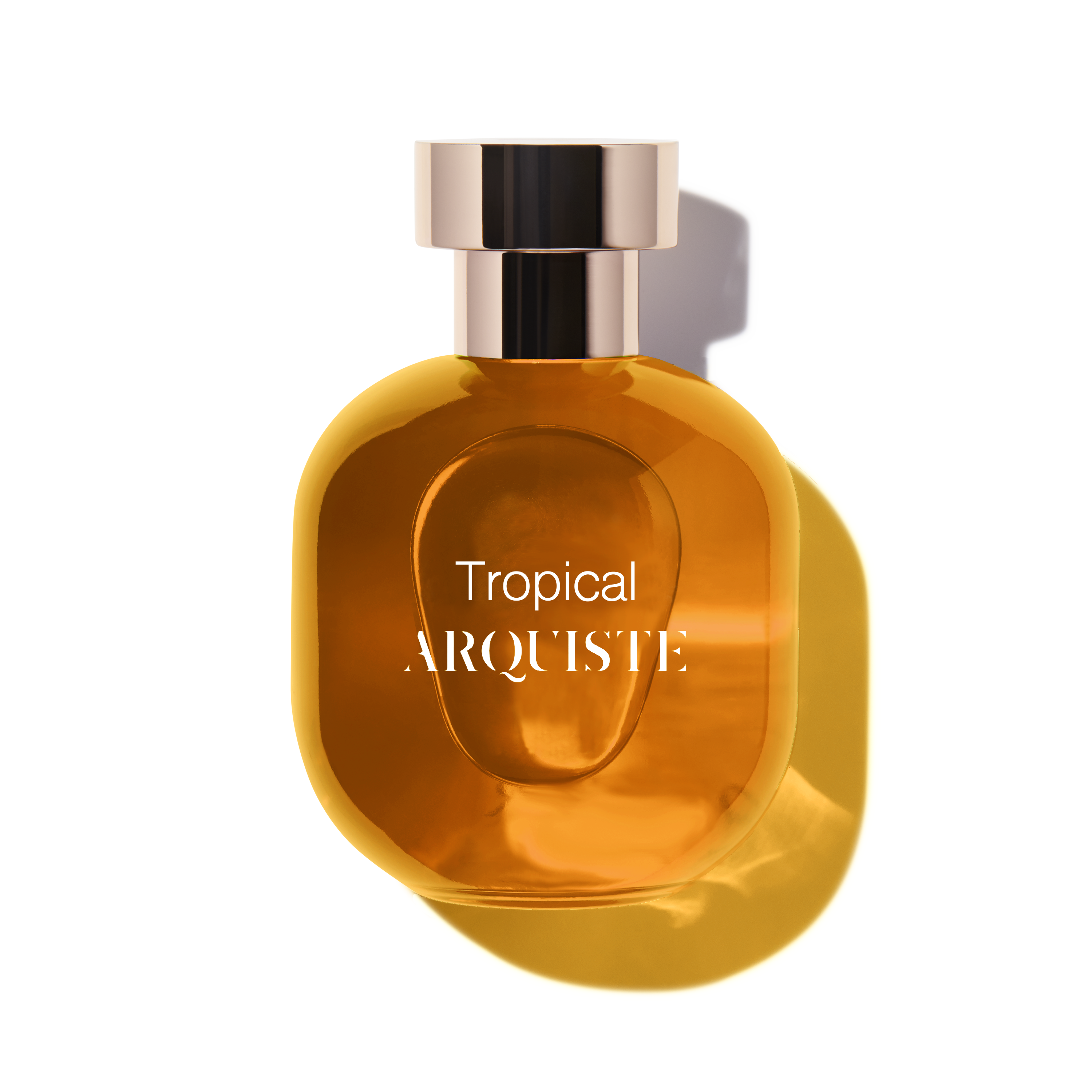Five Mexican flowers offered on temple altars believed by the Aztecs to be the intoxicating scent of Xochiquetzal, the goddess of beauty. Natural, opulent & explosive.
The signature ARQUISTE design consists of an ergonomic round bottle that feels great in your hands. Made of the highest quality glass in Parma, Italy, its complemented by a high-quality engraved metal cap, a fine mist spray pump and the newest technology for a crystal spray tube.
- In the Aztec language, a metaphor for poetry is “in Xochitl in Cuicatl”(Flor y Canto – Flower and Song), which exemplifies the importance of flora in Mexico. Xochitl, or “flower”, was used to refer to eloquent, elegant and well-used words.
- Two Aztec deities were closely associated with flora: Xochipili, the ‘Prince of Flowers’ was the god of summer. The exquisite body of his wife Xochiquetzal, was believed to be the source of all floral scents.
- The Aztec Gods received their offerings through fragrant smoke: White Copal, an aromatic tree resin used by Mesoamerican cultures as burned incense, acts as a cool, menthol backdrop to the rich floral scents.
- The velvety scent of Omixochitl or Mexican Tuberose is spiked by a warm-but-cold sweetness that was thought to attract benevolent spirits.
- Flowers and vegetables for the Mexico City market are still cultivated in Xochimilco, an area composed of floating gardens, known as chinampas, which dates from Aztec times.
Bio
– Caso, Alfonso, The Aztecs: People of the Sun, translated by Lowell Dunham, illustrated by Miguel Covarrubias; Norman: Oklahoma University Press, 1958.
– Velasco Lozano, Ana María L. & Nagao, Debra, Mitologia y Simbolismo de las Flores, “Arqueologia Mexicana” Magazine, Las Flores en el Mexico Prehispanico, Numero 78, Mexico City, 2006.
– Cañizares-Esguerra, Jorge, Puritan conquistadors: Iberianizing the Atlantic, 1550-1700, Stanford University Press, Stanford, California, 2006.
Image





























